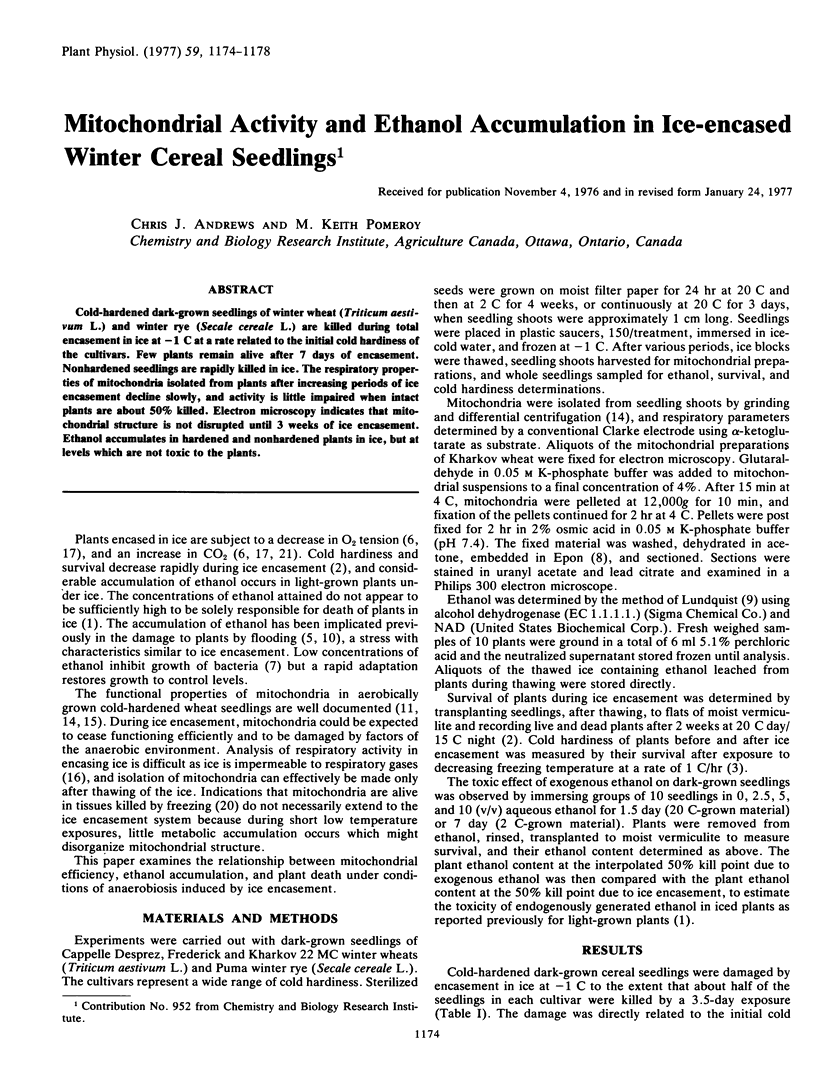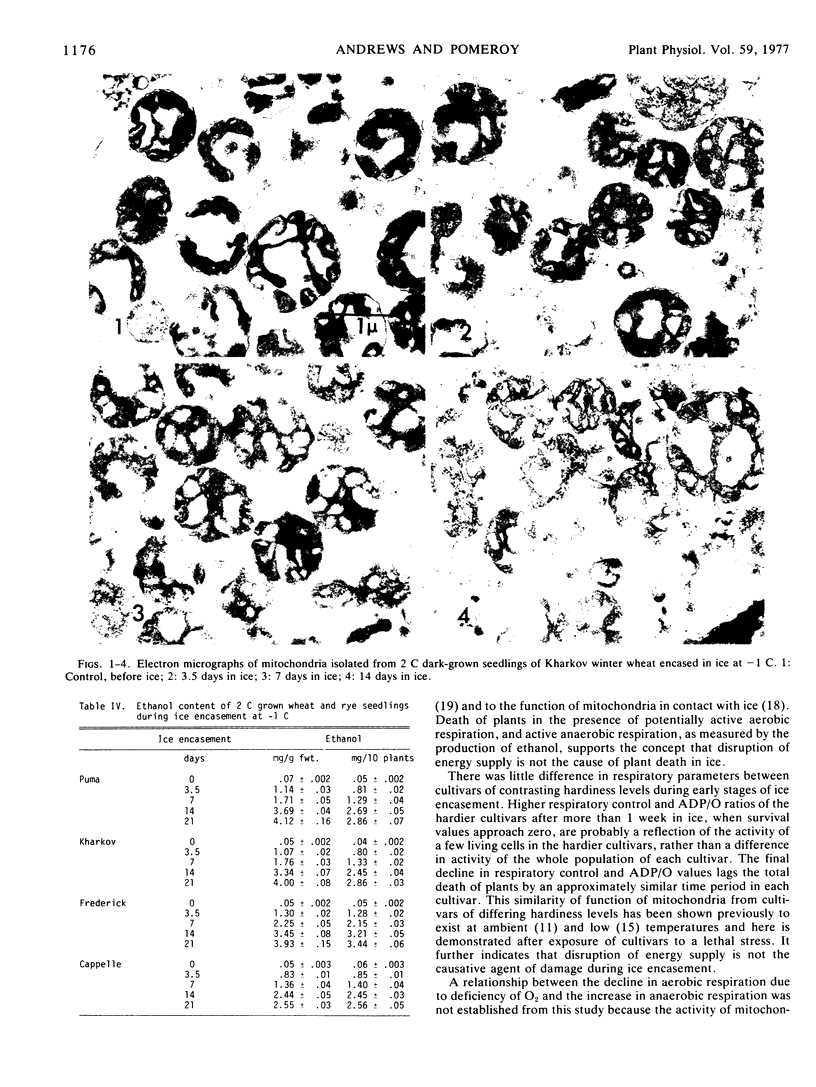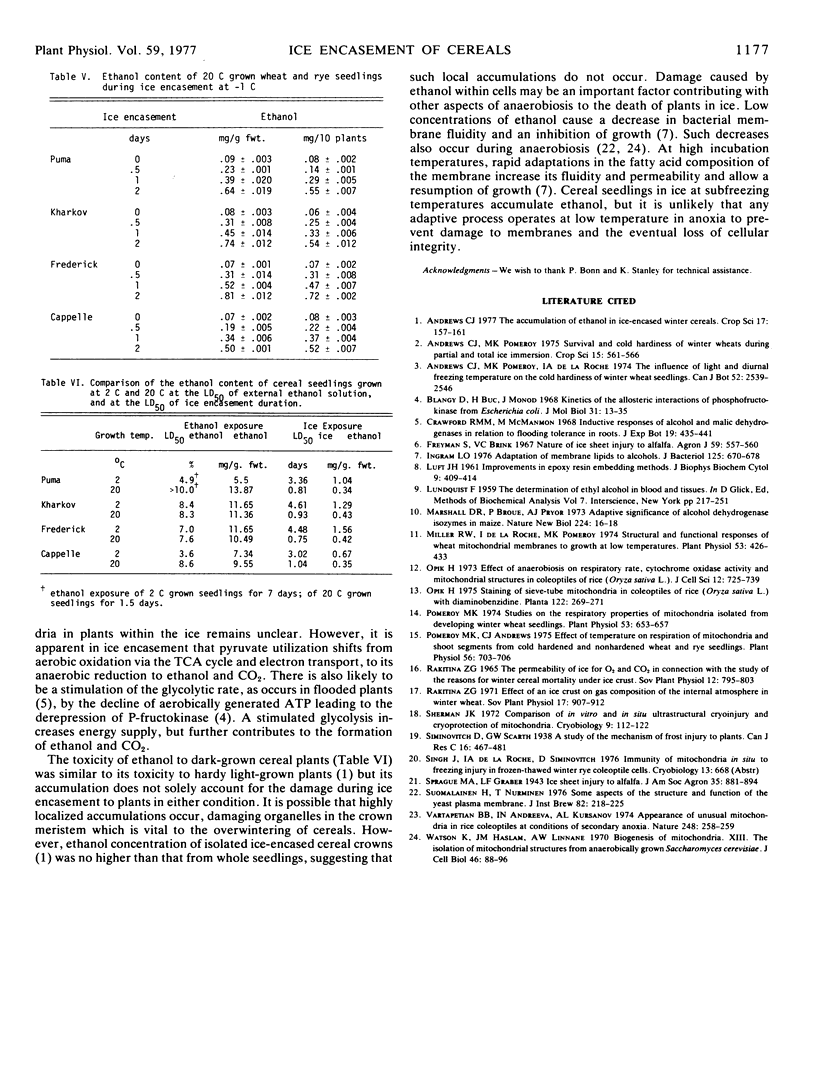Abstract
Cold-hardened dark-grown seedlings of winter wheat (Triticum aestivum L.) and winter rye (Secale cereale L.) are killed during total encasement in ice at −1 C at a rate related to the initial cold hardiness of the cultivars. Few plants remain alive after 7 days of encasement. Nonhardened seedlings are rapidly killed in ice. The respiratory properties of mitochondria isolated from plants after increasing periods of ice encasement decline slowly, and activity is little impaired when intact plants are about 50% killed. Electron microscopy indicates that mitochondrial structure is not disrupted until 3 weeks of ice encasement. Ethanol accumulates in hardened and nonhardened plants in ice, but at levels which are not toxic to the plants.
Full text
PDF



Images in this article
Selected References
These references are in PubMed. This may not be the complete list of references from this article.
- Blangy D., Buc H., Monod J. Kinetics of the allosteric interactions of phosphofructokinase from Escherichia coli. J Mol Biol. 1968 Jan 14;31(1):13–35. doi: 10.1016/0022-2836(68)90051-x. [DOI] [PubMed] [Google Scholar]
- Ingram L. O. Adaptation of membrane lipids to alcohols. J Bacteriol. 1976 Feb;125(2):670–678. doi: 10.1128/jb.125.2.670-678.1976. [DOI] [PMC free article] [PubMed] [Google Scholar]
- Marshall D. R., Broué P., Pryor A. J. Adaptive significance of alcohol dehydrogenase isozymes in maize. Nat New Biol. 1973 Jul 4;244(131):16–18. doi: 10.1038/newbio244016a0. [DOI] [PubMed] [Google Scholar]
- Miller R. W., de la Roche I., Pomeroy M. K. Structural and functional responses of wheat mitochondrial membranes to growth at low temperatures. Plant Physiol. 1974 Mar;53(3):426–433. doi: 10.1104/pp.53.3.426. [DOI] [PMC free article] [PubMed] [Google Scholar]
- Opik H. Effect of anaerobiosis on respiratory rate, cytochrome oxidase activity and mitochondrial structures in coleoptiles of rice (Oryza sativa L.). J Cell Sci. 1973 May;12(3):725–739. doi: 10.1242/jcs.12.3.725. [DOI] [PubMed] [Google Scholar]
- Pomeroy M. K., Andrews C. J. Effect of Temperature on Respiration of Mitochondria and Shoot Segments from Cold hardened and Nonhardened Wheat and Rye Seedlings. Plant Physiol. 1975 Nov;56(5):703–706. doi: 10.1104/pp.56.5.703. [DOI] [PMC free article] [PubMed] [Google Scholar]
- Pomeroy M. K. Studies on the respiratory properties of mitochondria isolated from developing winter wheat seedlings. Plant Physiol. 1974 Apr;53(4):653–657. doi: 10.1104/pp.53.4.653. [DOI] [PMC free article] [PubMed] [Google Scholar]
- Sherman J. K. Comparison of in vitro and in situ ultrastructural cryoinjury and cryoprotection of mitochondria. Cryobiology. 1972 Apr;9(2):112–122. doi: 10.1016/0011-2240(72)90018-1. [DOI] [PubMed] [Google Scholar]
- Watson K., Haslam J. M., Linnane A. W. Biogenesis of mitochondria. 13. The isolation of mitochondrial structures from anaerobically grown Saccharomyces cerevisiae. J Cell Biol. 1970 Jul;46(1):88–96. doi: 10.1083/jcb.46.1.88. [DOI] [PMC free article] [PubMed] [Google Scholar]






